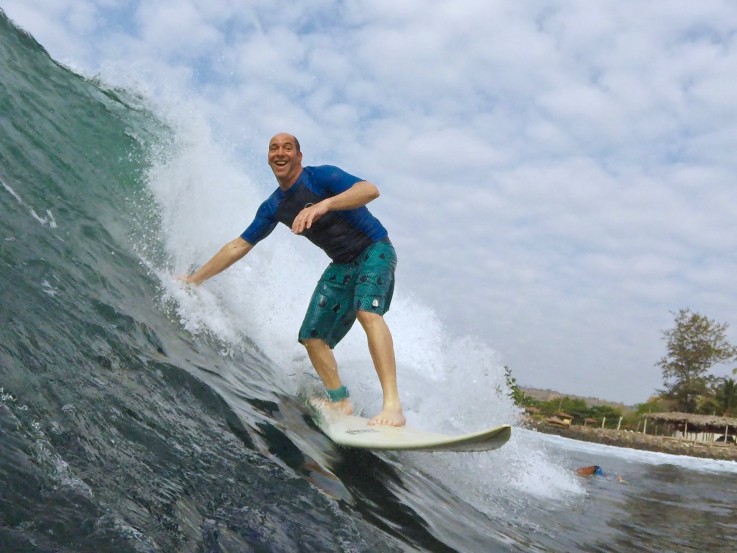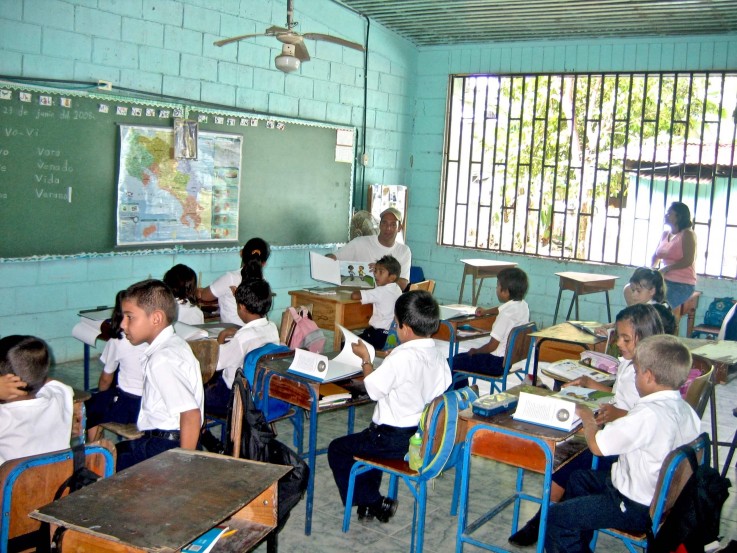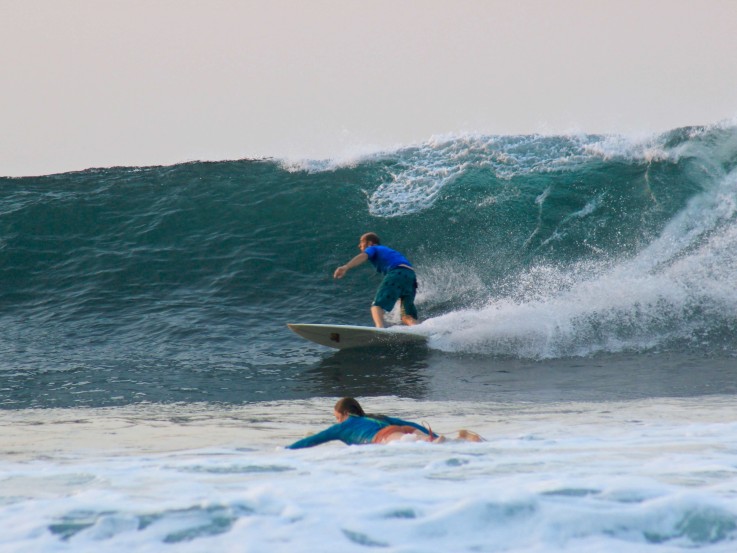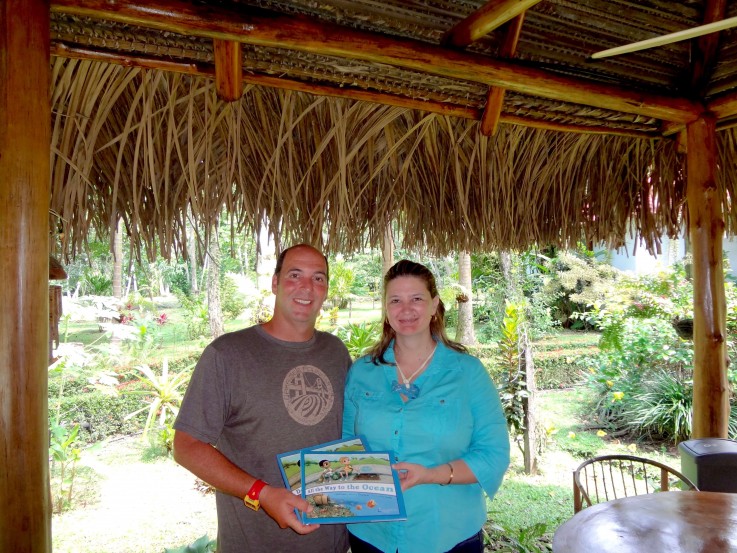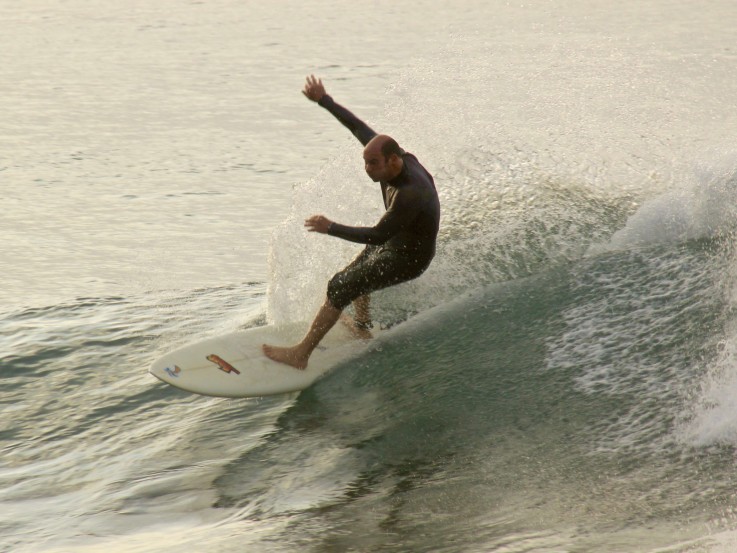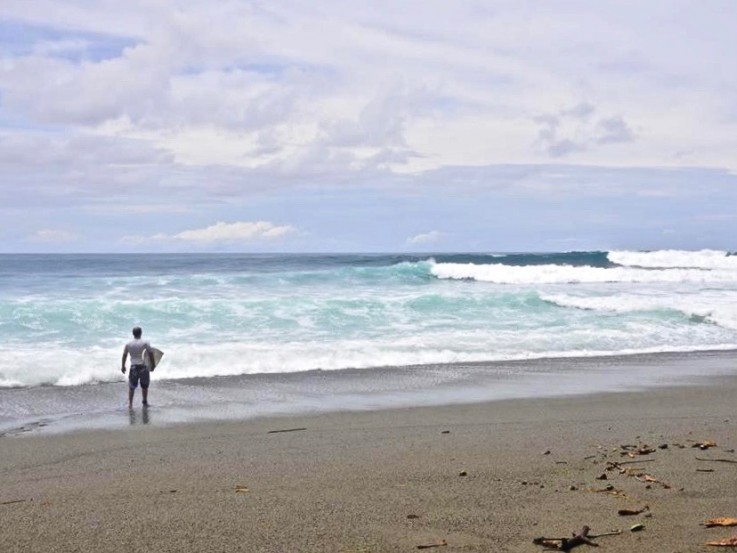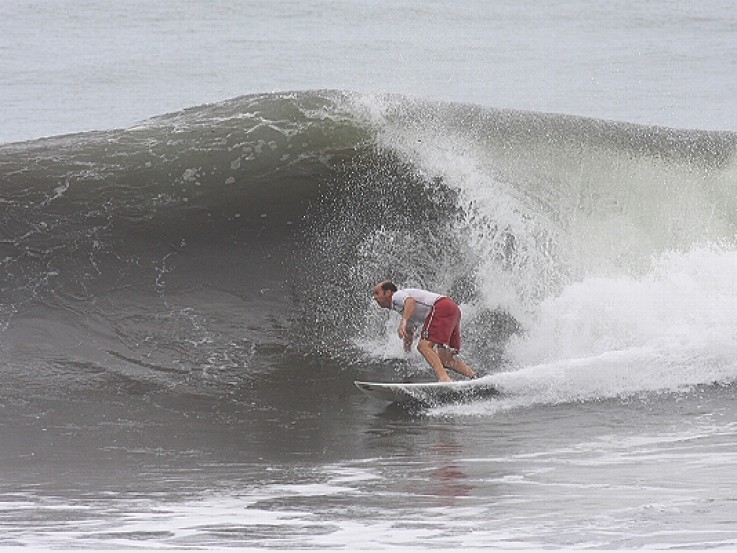Greg Gordon - Owner of CR Surf
After falling in love with Costa Rica’s variety of quality waves, stunning natural beauty and warm, welcoming people, Greg knew this was a place he wanted to spend more time, and share with other travelling surfers. Almost accidentally, Greg began to formulate what is now his Surf Travel Company, CR Surf, offering local advise, news and end-to-end trip planning for the intrepid wave chasers looking to experience the best of what Costa Rica, and beyond, has to offer. With a strong environmental conscience, and passion for teaching and sharing knowledge, Greg firmly believes that building a lasting business overseas starts with the communities you work with, forming strong local bonds and creating mutually beneficial relationships. He supports a plethora of local environmental and community projects and prioritises working with surf resorts and camps with similar values. For passionate advise, with almost 20 years’ experience, and a heart for sustainable surf tourism in Costa Rica, Greg’s your man.
So let's start at the beginning, where are you from?
I grew up as a Navy kid so we moved around a lot, but we always lived close to the sea. Most of my childhood was spent in Virginia Beach, Virginia. After college I lived in Cocoa Beach, Florida for a dozen years, Costa Rica for a few, a short stint near San Diego, California, Miami Beach for a couple of years, and then lived for six years in Oakland, California.
Where is home now, how did you end up there and why?
Now I am spending most of the year in the surf town of Dominical, on the southwest coast of Costa Rica. I realized that although the waves are great around San Francisco, the traffic was getting worse and I was not a fan of pulling on a 4/3 wetsuit and 5 mil boots for every session. I already had plenty of connections in Costa Rica and so I sold or gave away most of my possessions and flew down with just two boards, a suitcase, and my cat.
Tell us about your Travel Company CR Surf?
CR Surf was created to help surf travelers find out what the surf is doing in Costa Rica, and then plan and book an amazing customized surf trip. We work with only the best surf camps, hotels, and resorts in the country, those with qualified instructors and who also are involved in giving back to their communities. Our car rental partners work to be Carbon Neutral. As 1% for the Planet members, part of our profits goes to help protect marine life on both the Caribbean and Pacific Coasts. We also have sponsored local surfers (like Noe Mar and Leilani McGonagle who are currently on the WQS) and donate to the lifeguard programs since we believe our clients’ safety is our primary concern.
What lead you to start CR Surf back in 1999, and what was it about Costa Rica that drew your attention, so much so to start your business?
When I lived in Costa Rica back in 1998 I started a weekly surf report and forecast that I would print out and post around the town of Dominical. The CRsurf.com website was started in 1999 to share the report with a wider audience and the monthly tide charts were popular with both locals and travelers. In the years that followed, I had a growing number of surfers ask about where to stay based on the expected swell and how to get there. I began arranging trips for them, setting up their hotels and car rentals, and it just grew from there. Then in 2008 I received my professional license to sell travel.
On all of my trips I have been stunned by the natural beauty of Costa Rica, from towering waterfalls and rainforest covered mountains to the amazing variety of flora and fauna. Then you add to that the friendliness I’ve encountered in every surf community, and I wanted to create a lifestyle where I could stay here as long as I could.
You have obviously travelled Costa Rica extensively, so what are a few of your favourite spots?
My favorite spot to stay is in Dominical on the southwest Pacific coast. It’s an uncrowded beach break with a small rivermouth on the north end that is constantly making new sandbars. Plus there is an empty point break nearby for when the swell gets really big. As a regular foot, my favorite rights are Ollies Point, Playa Negra, Matapalo, and Salsa Brava. But I love the lefts at Pavones, Boca Barranca, and Isla Uvita, too.
Costa Rica has changed a lot since 1999, and so has the nature of surf travel, which is so much more accessible, and the number of surfers has vastly increased. How has this affected your business in positive and negative ways?
There are over 250,000 surfers that visit Costa Rica every year plus thousands of local surfers that enjoy the 100 plus surf breaks on both coasts. Some breaks are now overcrowded when a good swell arrives or when it’s flat at most other spots. And with hundreds of surf camps to choose from now, it gets confusing which ones are the best for beginners or more advanced surfers.
My expertise is in helping a traveling surfer find a safe, comfortable place to stay where he or she can find quality surf at their ability level but without the pack. I know which surf camps have qualified instructors and the best accommodations. I know what camps appeal more to families, women, and those wanting high-end or more modest accommodations. Having surfed most every break from Nicaragua to Panama on both coasts, I know where to paddle out, what tide is best for which beach, and what swell direction works best. No one else has been offering Costa Rica surf-specific travel advice for over 20 years.
What did you do before you started your business CR Surf?
Besides running the website, I used to be a teacher. I taught computers and technology at Cocoa Beach High School and coached their surf team while I was there. I also was involved with the Surfrider Foundation as a volunteer, leading the Sebastian Inlet chapter in Florida and participating in chapters in Miami, San Diego, and San Francisco.
What’s the best thing about what you do, and what is the most challenging?
The best part of what I do is that I get to help surfers from all over the world experience the wonderful waves and culture in Costa Rica, while also supporting the local communities and environment. Helping people have a wonderful and safe travel experience is fulfilling and allows me to share the stoke with people on a daily basis.
The most challenging part of what I do is that I don’t have the ability to control what mother-nature provides in terms of waves and weather each day. But, I am able to use my extensive knowledge of the Costa Rican coastline to direct people to the right place based up the conditions, and I also can recommend some amazing terrestrial experiences for the rare days when it is flat or windy!
As a company with an environmental conscience, how difficult is it to carry your passions for protecting our planet through to your business?
Our company’s mission is to support sustainable surf tourism. That means sending clients to places that give back to their communities and take care of their beaches. It means posting news about environmental topics and promoting beach cleanups. The challenge is that there are many groups who are trying to help, but they have limited resources. If clients are interested in working with or supporting local groups while they are here I am happy to make the connections.
When I first moved to Costa Rica in 1998 I started a group called the ‘Basura Busters’ and led school kids and other volunteers in monthly beach cleanups, getting the local businesses to donate food and prizes for the participants. Right now we work with CommunityCarbonTrees.org, where clients can sponsor a tree that is planted to reduce their carbon footprint. The trees are cared for four years by Costa Ricans who are paid a fair wage for their work. And we donate annually to CREMACR.org who do research on turtles and sharks in Costa Rica with the goal of protecting them.
What advise would you give to anyone looking to start their own surf-travel business, particularly those looking to create something overseas?
I would say to pick a place you know very well and focus on creating a unique travel experience for your clients. Be sure to respond to your inquiries quickly and to really listen to your clients needs since customer service is key to getting repeat clientele. At every opportunity, try to give back to the local surf community since they are your clients’ hosts. And don’t forget why you started your business, to provide the lifestyle you were always dreaming about.
The personal stuff:
What are you known for?
I am known for my knowledge of Costa Rica surf breaks, being a loyal friend, and for standing up for the environment.
What are you most proud of?
Living the dream I envisioned for myself 20 years ago – getting to live in Costa Rica and surf every day on my own schedule while also helping spread the good vibes with others.
Who or what is your greatest inspiration?
I am really inspired by Yvon Chouinard from Patagonia who uses his company to support environmental projects globally and who didn’t sacrifice his vision of an eco-friendly brand in pursuit of profits.
If you could spend a day with someone who inspires you, who would it be and what would you do?
Another hero of mine is Gerry Lopez, so I would join him on a surf trip somewhere tropical and listen to his stories while we trade empty waves.
If you could be someone else for a day, who would it be?
I would gladly step into Kai Lenny’s flops to have the skills to surf some giant Peahi, pull some air reverses, or foil across the open ocean.
Guilty pleasure?
Sumba Ice Cream, made in Costa Rica by my friend Grace. Its ingredients are only coconut milk and cane sugar, plus whatever one or two items she added for flavor. My favorite is Key Lime Basil, but the Ginger and Passion Fruit options are also divine.
What is the greatest thing you have learned in your life?
To appreciate what I have and not always be wanting more.
Of all the places you have travelled to, what place in particular stands out? And why?
In 2009 I went to the Caribbean side of Nicaragua to volunteer by teaching women how to market their businesses online. While I was there I saw a lot abject poverty and kids surfing on pieces of driftwood. That trip made me think that promoting sustainable surf tourism could help this community and others like it.
What brings you the most happiness in the world?
Besides visiting my family and friends, it is watching the sunset over the ocean and dolphins glide through the surf.
What are you most grateful for?
I am grateful that my parents raised me to appreciate the education I have, taught me to think critically, and support me in my ambitions.
Surf talk:
When and where did your passion for surfing start?
I started surfing on a 6’6” Ultralite in Virginia Beach when I was 16. I would drive through the night and sleep on the beach in the Outer Banks, North Carolina - just to catch a couple of hours of clean waves before having to head back for work. Then when I moved to Florida I found the waves were not much more consistent and while teaching used my vacation time to travel around Central America and the Caribbean looking for surf. And when I lived in California I would drive for hours and camp out to meet an incoming swell from Baja to Punta Arena. Two years ago I made the pilgrimage to Bali, and explored Lombok and Sumbawa as well. It’s this passion – searching for quality surf - that will continue for the rest of my life.
What does surfing mean to you, and how has it changed your life?
When I am out in the water, I am completely present with my surroundings. There are no distractions. I am focused on the ocean, the wind, the sky, and the marine life around me. Back on land, I am learning to stay ‘in the moment’ and not get lost in thinking about what was and what may be.
Favourite surf spot?
Matapalo, Osa Peninsula, Costa Rica. Where else can you surf an uncrowded wave in the tropics with monkeys howling in the trees on the shore, scarlet macaws screeching above, and whales singing below you?
Most memorable session?
On my first trip to Costa Rica in 1996 my friend Ron and I found a boat captain to take us to Isla Uvita on the Caribbean side. This was just after Hurricane Cesar passed over the country and it was still delivering some powerful swell. We meet the guy at his place and while waiting for the boat, saw that he had a big green sea turtle flipped on his back with its flippers tied together. I felt horrible for the creature and ashamed for supporting this guy, but I knew how poor his family was and that he was doing whatever he could to survive. I thought that by giving him another way to make money, maybe he wouldn’t need to hunt turtles as much.
So he motors us out to the island, which is about a kilometer from shore, and leaves us there. Waves are coming in fast and hollow with double overhead sets. I caught only a couple of smaller waves, not wanting to crack my 6’6’ Quiet Flight, the only board I brought for the trip. There were gigantic tankers motoring by on their way to port. A thunderstorm loomed ominously on the horizon and it was starting to get dark. And we were the only two surfers out, not knowing where to paddle in if our boat driver didn’t return. He did show up right before dark and he used the swells to ride over sections of reef to get back to the beach. I had never been so glad to return to shore and vowed after that experience to do more to protect sea turtles and other marine life.
Favourite surfer?
Gerry Lopez – He is the epitome of style in any size wave, a surf explorer, and an exemplar of clean living.
Biggest surf mission or most hardcore surf spot you've visited?
In 2015 I traveled with one of my best friends to South Africa. She also charges big waves and coming from northern California was used to cold ocean temps. After 24 hours of flights and driving we made it to Jeffrey’s Bay and surfed well overhead waves for four days without any crowds. Then we drove the ‘Garden Route’ for the next ten days to Cape Town, stopping in beach towns along the way to search for waves.
It was June, which is their ‘winter’ so many of the resort areas and lineups were empty. We had an idea of what each break would be like from reading descriptions on surf websites, but paddling out by ourselves, not knowing the currents or what was below the surface was quite scary. A couple of spots even had a ‘shark bite survival kit’ hanging from a wooden post. And twice after we surfed a break, we found out there was a shark attack at the same beach the next day. I would definitely go back though, as Cape Town is the most scenic surf city in the world and Jeffrey’s Bay is regular foot’s paradise.
Favourite board?
Right now I’m riding a 6’4” Dylan Longbottom rounded pintail custom shaped for me last year for a Bali trip. It rode so well that I brought it back to Costa Rica. It works in everything, from waist high mush to double overhead barrels.
Finish the sentences:
I love...
…teaching. Before one of my surf vacations to Costa Rica, I purchased 25 books in English and Spanish titled All the Way to the Ocean, by Joel Harper. It’s about two kids who are learning about how plastic ends up in our waterways. I donated them to the Dominical elementary school and read the book to the class, asking afterward what they could do to prevent more litter on the beach. Whether helping surfers find the best waves in Costa Rica for their skill level or reading to kids about the dangers of plastic pollution, I want to share my knowledge and experience with others.
I miss...
…having more quality time with family and friends.
I wish...
…more people would vote for politicians who support clean energy policies.
I want...
…more people to surf since it connects them to the ocean and hopefully instills in them a desire to protect it from pollution.
Where can we find you online?
| Website: | www.crsurf.com |
| Instagram: | @crsurf |
| Facebook: | www.facebook.com/crsurf |
| Pinterest: | www.pinterest.com/crsurf |
| Twitter: | www.twitter.com/crsurf |
| LinkedIn: | www.linkedin.com/in/greg-gordon-590b9611 |
| YouTube: | www.youtube.com/channel/UCtWWxRsBFC2Q556cjulgGJA |
| Google+: | https://plus.google.com/+Crsurf |
Posted by: Emma Gibbons, on September 20, 2018
Categories: Interviews
Latest Posts
Craig Sims - White Horses & Surfing Life Publisher
Luke Kennedy - Editor of Tracks Magazine
Simon ‘Swilly’ Williams - Surf Photographer
Jarra Campbell - the Bondi Alchemist
Greg Gordon - Owner of CR Surf
Shayne Nienaber - Surf Photographer
Alexa Hohenberg - Owner of Still Stoked
Christine Deveney - TapaReef Owner & Creator
Russell Ord - Surf Photographer
Richard Kotch - Surf Photographer
Categories
Interviews
Articles
Videos
Press Releases
Quiz
Archive
December 2018
November 2018
October 2018
September 2018
August 2018
July 2018
June 2018
May 2018
April 2018
March 2018
February 2018
January 2018
November 2017
January 2017
December 2016
November 2016
October 2016
September 2016
August 2016
July 2016
June 2016
May 2016
April 2016
March 2016
February 2016
January 2016
December 2015
November 2015
October 2015
September 2015
August 2015
July 2015
June 2015
May 2015
April 2015
March 2015
February 2015
January 2015
December 2014
November 2014
October 2014
September 2014
August 2014
July 2014
June 2014
May 2014
April 2014
March 2014
February 2014
January 2014
December 2013
November 2013
October 2013
September 2013
August 2013
July 2013
June 2013
May 2013
April 2013
March 2013

